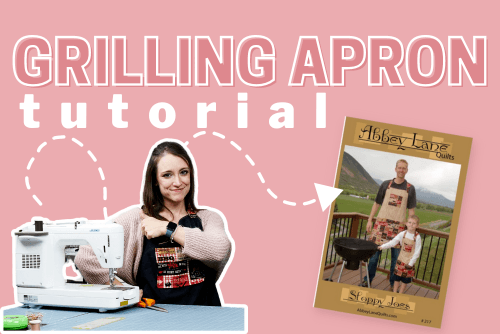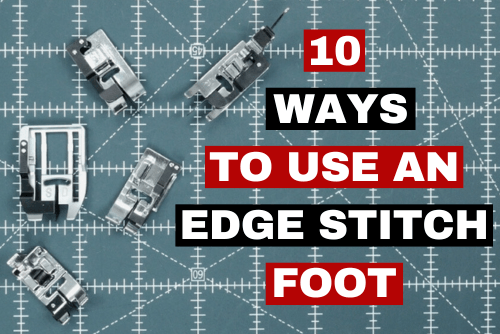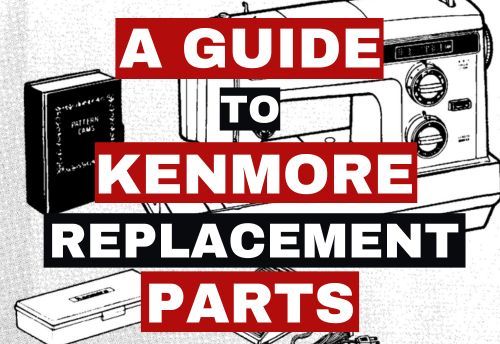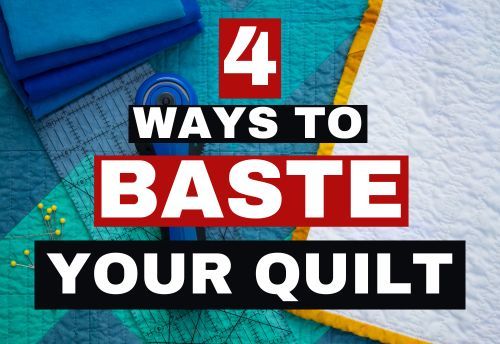SEWING YOUR OWN HALLOWEEN COSTUME
With each passing season of spook, premade "shake and go" Halloween costumes become more and more accessible. We're not knocking anybody who chooses this route, but we feel there's something special about prepping and sewing costumes out of some fabric and determination. Heck, even practicing some upcycling by building upon pieces picked up secondhand results in a one-of-a-kind look that's sure to impress. So, where do you start? Well, you first have to conceptualize your look. So, we thought we'd dig into the time capsule to research the second year's most popular costume in the last 2 decades to help you conjure up some ghoulish garments and give you tips, such as sewing needles, technique, and machine recommendations, on making your own Halloween costumes!
2012 - MONSTER HIGH CHARACTERS: EASY TO UPCYCLE
If you were to make a collage of 2010s culture, no doubt Monster High Dolls would have their own little space. If you're unfamiliar with these toys, they were similar to Bratz dolls if they had all put on Halloween costumes. So it is no surprise that this was the most popular costume in 2012. What's more, you had seemingly endless on-theme options. Some popular choices were Frankie Stein (Frankenstein), Clawdeen Wolf (werewolf), and Cleo De Nile (Cleopatra). The best part of this costume? It was simple. All you needed to do was imagine what the "Mean Girl" in a 2000s teen comedy (think Regina George) would wear to high school and make it spooky. Want to be Draculaura? Grab a plaid skirt, a Juicy Cutoure zip-up, and some high-heel boots, and all you have to do is the makeup and wear some vampire fangs! It was an easy way for young women to throw together something quickly without purchasing or learning to sew costumes.
HOW TO BE A MONSTER HIGH DOLL
We recommend heading to your nearest thrift store and finding pre-owned pieces that scream, "it's a Friday night in 2006; have your parents drive us to the mall so we can meet up with Jason at Abercrombie," and building upon them to create something truly unique. Then, follow these tried-and-true upcycling techniques to take "plain clothes" to "custom costume":
- ALTERATIONS - using your sewing machine, make alterations to the clothes were necessary to give them a personalized fit. Depending on the difficulty of the materials, you can use the following special-purpose sewing feet while you sew: hemmer presser foot, walking foot, or roller foot.
- SEWING EMBELLISHMENTS - using hand sewing needles or specialized sewing machine presser feet, you can sew on sequins, applique, yarn, fringe, etc. With proper technique, your sewing machine's zipper foot can be used for certain embellishments (like piping).
- GLUE IS YOUR FRIEND - using E6000 (we cannot stress the importance of using a proper industrial-strength sewing adhesive), add rhinestones, glitter, or other eye-catching accouterments to your outfit. Adding sparkle, texture, color, and dimension pulls your costume into fantasy!

We want to note that "upcycling" generally refers to deconstructing something existing and turning it into something new. For example, turning window curtains into a gown (shout out to the o.g. upcycling queen, Scarlett O'Hara). However, repurposing without changing the construction of a garment is also a form of upcycling. "Reuse" is the most practical part of the "Reduce, Reuse, Recycle" triangle!
2002 - SPIDER-MAN: SEWING WITH HIGH-STRETCH FABRIC
The most popular Halloween costume of 2002 should come as no surprise to anybody who was around for the success of Tobey Macguire's rendition of Spiderman. Who didn't want to shoot webs from their hands and save Mary Jane from the Green Goblin? So what's great about this costume if you're already familiar with sewing? It's just a body suit, some gloves, and a mask! If you've got some red and blue spiderweb-print spandex, you've got a costume. Spiderman patterns are available online, but you can watch some tutorials and get the gist. A jumpsuit is a jumpsuit, right? We urge you to keep it simple and not worry about the raised webbing. If you insist on going the extra mile, you could make some webbing out of liquid silicone, but there's no good, fast way to adhere it to stretch fabric other than sewing in with a wide zig-zag. But, even then, it would take hours and look funky. Not worth it. For the eyes, we recommend using a black stretchy mesh.
THINGS TO CONSIDER WHEN SEWING WITH COSTUME SPANDEX OR KNITS
- USE PROPER SEWING MACHINE NEEDLES - using universal sewing needles on stretch fabrics can have disastrous consequences (holes, puckers, unraveling, uneven feeding, etc.). We highly recommend using stretch needles or microtex needles. Both are designed with special tips that better pass through the weave of your fabric rather than puncturing it. We recommend getting a pack of costume sewing needles as it will have everything you need to accomplish your project.

BREAK OUT YOUR SERGER - sergers are great for this kind of stuff! Really, it's kind of what they were made for. Overlocking stitches will provide the most secure seam for your body suit. You do not want your seams to start opening after a night of defeating Doctor Octopus. The assurance provided by a 3 or 4-thread overlock will give you peace of mind that your costume will stay intact. Even better, overlocking machines offer a differential feed (feed dogs that pull sections of the fabric under the serger presser foot at different speeds). A differential feed means the fabric won't stretch as it's been sewn, a common issue when using a sewing machine.

DON'T OWN A SERGER?
If you're asking yourself, "what is a serger sewing machine?" or "what is a serger used for?", to put it simply, a serger is a specialized machine that is most common in industrial garment sewing; however, they are also popular among home sewers. You can check out our Beginner's Guide to Serging on YouTube here.
If you don't own a serger but have been in the market for one, we recommend the following based on your potential needs:
- BEST BUDGET-FRIENDLY/BEGINNER SERGER: Baby Lock Vibrant, Janome MyLock 634D, & Juki MO-1200QVP
- BEST SERGERS OF 2022: Juki MO-1000, Elna eXtend 864, & Baby Lock Victory
- BEST 2-IN-1 SERGER AND COVERSTITCH MACHINE: Babylock BLS8 Accolade
If you're curious about owning a serger but are not ready to make a significant investment, buy one secondhand! Vintage overlockers were built well and often run just fine! If you encounter one for $40 that needs some TLC, we would be happy to help you try to find any of the parts you need. We often carry many serger presser feet, foot controls, power cords, sewing machine instruction manuals, serger replacement parts, etc. Repairing is a great way to dip your toes in specialized sewing machines. After all, repairing is caring, right?
I hope this helped give you some ideas! Feel free to comment or contact us directly if you have questions about working with costume materials!








